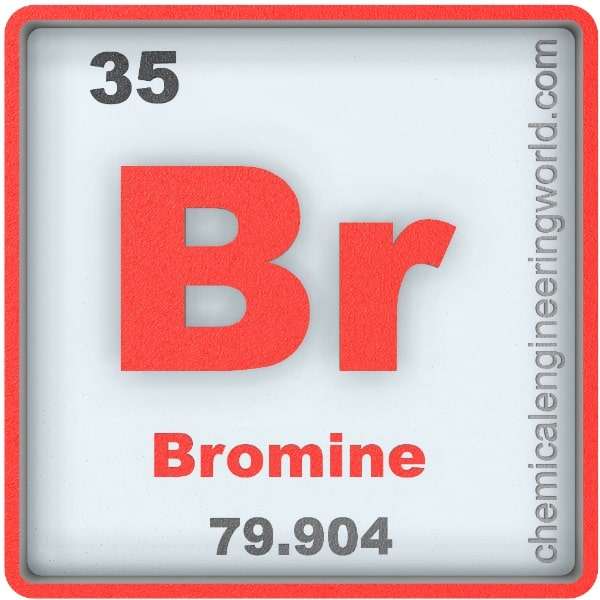Bromine Element Properties and Information

Bromine Element Properties and Information
Bromine is thirty-fifth element on the periodic table. Elements are arranged in the periodic table on the basis of the atomic number. Atomic number is the number of protons in the nucleus of the atom. Bromine has an atomic number of 35. It is located in the Group 17 and Period 4 of the periodic table of elements. It is denoted by Br. The name is derived from the Greek word ‘Bromos’ which means Stench.
Antoine-Jérôme Ballard published his findings about Bromine in 1826. He is credited as the discoverer of the element. He took a sample of salty water from Montpellier, evaporated it and collected the residue. He passed chlorine gas through the residue which caused orange-red liquid to get liberated.
Elemental bromine is highly reactive hence it is rare to be found in combined state. It is rare in Earth’s crust in combined form also. The bromide ion is highly soluble in water. Thus a fraction of bromine from Earth’s crust gets dissolved into the seas and oceans.
Physical Properties
- Bromine is a deep-red liquid which has a oily texture.
- The atomic mass of bromine is 79.904
- The melting point of bromine is -7.2°C
- The boiling point of bromine is 58.8°C
- The density of bromine is 3100 in S.I. units at 20°C
- Bromine is the one of among the only two elements which exist in liquid state at standard temperature and pressure.
- Bromine has two stable isotopes; Bromine-79 and Bromine-81. Their presence is almost equal in quantity. Bromine-79 makes upto 51% of the total bromine and bromine-81 makes upto 49% of the total bromine.
Chemical Properties
- Weak hydrogen bonding is present in the crystalline solid bromine.
- Hydrogen Bromide is one of the most popular halides. It is colourless and usually made by reduction of bromine with red phosphor.
- Aqueous hydrogen bromide is a strong acid. It is also known as hydrobromic acid.
- Nearly all elements in the periodic table form binary bromides.
- Bromination of a metal tends to produce relatively smaller oxidation states than chlorination of the metal.
- The C-Br bond is electron deficit hence an electrophile. The reactivity of organobromide compounds is intermediate between organochloride and organoiodide compounds.
- Even though bromine is rare on earth. The organobromide compounds are more common than the organochloride compounds because of the ease of oxidation.
Methods of Production
Extraction: The bromide extraction is done from the waters where the concentration of bromine is appreciable. The bromine is present in the form of bromine ions in the waters. The bromide ion is liberated as bromine via halogen exchange. The bromine is removed using blast of steam or air and it is then collected and condensed.
Relevance in Chemical and Related Industries
Polymer industries: Bromine containing compounds are added during the polymerisation process to make brominated polymers.
Relevance in Other Industries
- Brominated flame retardants: These materials contain bromine compounds. When the material burns, hydrobromic acid is produced which interferes with the oxidation reaction of the fire.
- Pharmacology: Bromine containing compounds have been used as sedatives and anticonvulsants.
Health Effects on Exposure
- Bromine Liquid: Bromine liquid is highly corrosive in nature. It immediately starts corroding any part of the body it contacts with.
- Bromine Vapour: Bromine Vapour is highly toxic. It is an irritant to whatever organ of the body it contacts with and when inhaled it poisonous the system.
- Organic Bromines: Depending on the type of organic bromine compound one is overexposed to, it may cause liver, kidney, lungs or gastrointestinal compounds.
Effects on Surroundings
- Waters: The organic bromine compounds are used as disinfectants, they can rinse off to surface waters and since they are toxic, they affect the life present on the water body.
- Animals: The animals who rely on the water body in accordance with the food chain suffer too. Consumption of the waters and the fishes contaminated with bromine causes nerve damage and in severe cases, DNA damage.
References:
https://en.m.wikipedia.org/wiki/Bromine
































